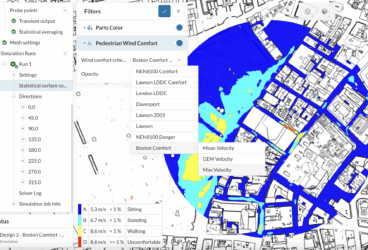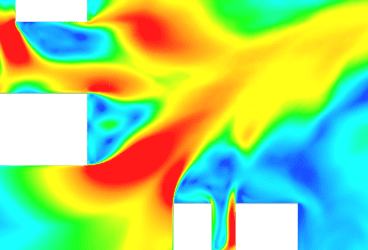Creating a thermal environment in an internal space in which occupants feel comfortable is possibly one of the most critical aspects of building design today. Workplace productivity, customer satisfaction in stores, audience comfort and enjoyment in theaters, and much more can directly be linked to the perceived thermal comfort in the space. For example, an office in optimal conditions enables us to think and work better, not only improving our well-being but also directly impacting productivity.
“Thermal comfort is that condition of mind that expresses satisfaction with the thermal environment.” – ASHRAE 55
Basing the layout of HVAC systems on experience still seems to be the standard today. This approach comes with inherent risks and limitations. The effective cost of discomfort is simply too high; the common sense approach so far is rather too much than too little, often resulting in oversized HVAC systems and higher than necessary equipment cost.
However, in recent years more and more tools have entered the market that help predict thermal comfort conditions in a space during the early design stage, taking the guesswork out of the equation. Adoption of these tools throughout the architecture, engineering, and construction (AEC) sector is advancing rapidly.
SimScale, aiming to become a standard tool in every design and construction engineers toolkit, now includes features for thermal comfort parameter calculation and radiative heat transfer modeling. This is a huge step towards providing a full feature set for all common thermal comfort studies.
What are Thermal Comfort Parameters?
The term “thermal comfort parameters” relates to multiple international standards that have been established with the purpose of “specifying the combinations of indoor thermal environmental factors that will produce thermal […] conditions acceptable to a majority of the occupants within the space” (ASHRAE 55). The leading standards defining thermal comfort conditions are ASHRAE 55 and ISO 7730, both based on the same thermal comfort model developed by P.O. Fanger.
While these standards are primarily designed to define thermal comfort conditions for spaces where people will mostly be seated (offices, theaters, lecture halls, etc.), their application is not limited to only these spaces.
According to the standards listed above, occupant thermal comfort can be predicted based on air temperature, thermal radiation, humidity, and air speed, as well as personal factors such as physical activity and the degree of clothing insulation.
SimScale provides those predictions in the form of thermal comfort parameter outputs, specifically “predicted mean vote (PMV)” and “predicted percentage of dissatisfied” (PPD), following the static model for thermal comfort.
Predicted Mean Vote (PMV)
The predicted mean vote (PMV) is a dimensionless index defined on a -3 (cold) to +3 (hot) scale. Based on empirical studies for different combinations of air temperature, air speed, mean radiant temperature, relative humidity, clothing level, and level of physical activity, it predicts the level of thermal comfort that occupants would feel. We would hope that most regions would sit around the 0 mark in the middle and no occupied area in a space should exceed +/- 0.5 from thermal neutrality (0) in order to guarantee thermal comfort.
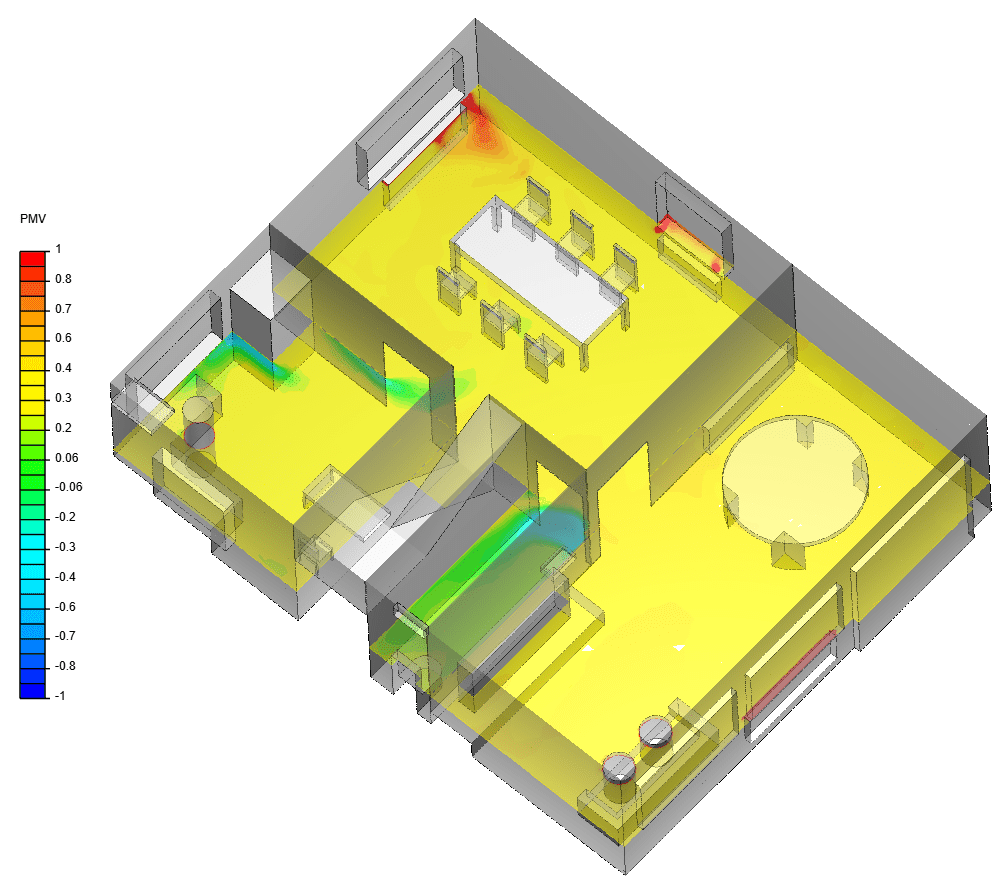
Predicted Percentage of Dissatisfied (PPD)
While predicting the thermal sensation of occupants via PMV is an important first step, in practice it’s often more useful to avoid thermal dissatisfaction of occupants by trying to keep the percentage of people low who would consider a thermal environment to be uncomfortable. For that reason, the predicted percentage of dissatisfied (PPD) index has been developed. It is calculated from the predicted mean vote (PMV).
Both values end up being related, where percentage dissatisfied increases for PMV values above and below zero (thermally neutral).
Interestingly, even at a PMV of 0, the PPD index indicates that 5% of the occupants will still be dissatisfied with their environment; you simply cannot please everyone.
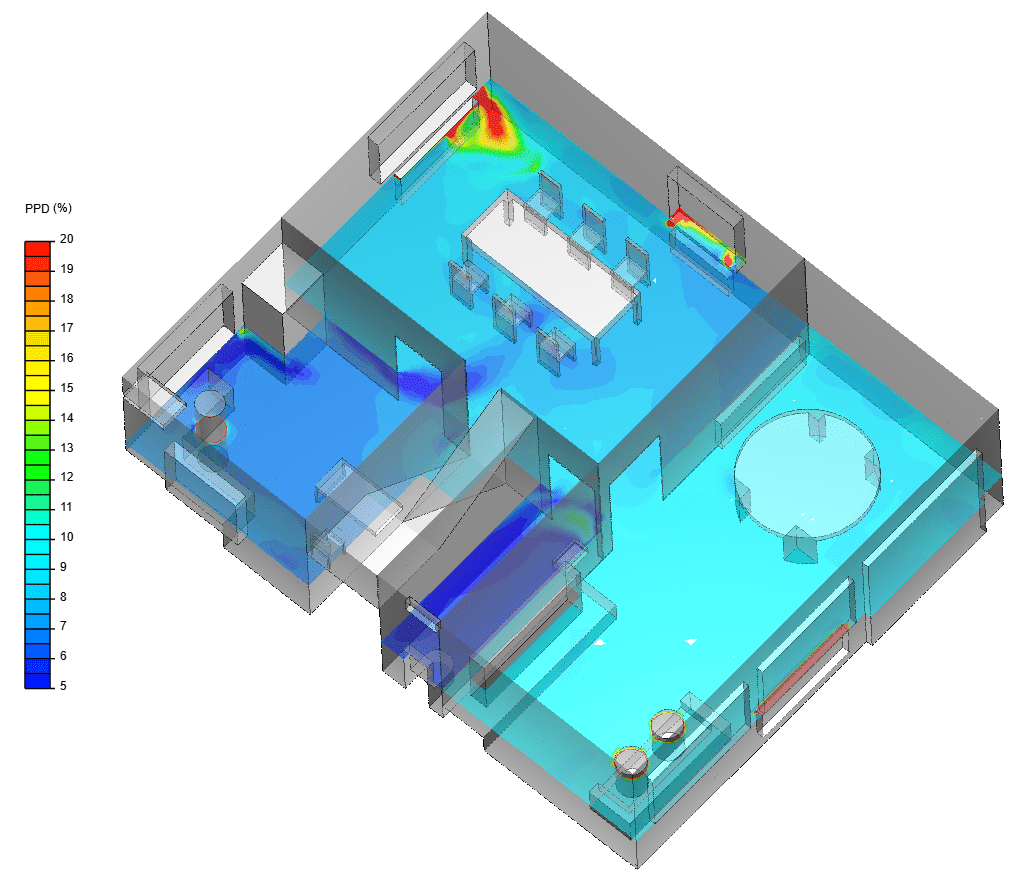
For specifics on how to use SimScale to predict thermal comfort, take a look at the documentation and this tutorial project.
Radiative Heat Transfer
One important aspect for correctly predicting thermal comfort is thermal radiation, which is the transfer of energy through electromagnetic waves. In contrast to the two other means of heat transfer in the form of conduction and convection, the unique property of radiation is that it requires no media to be transferred.
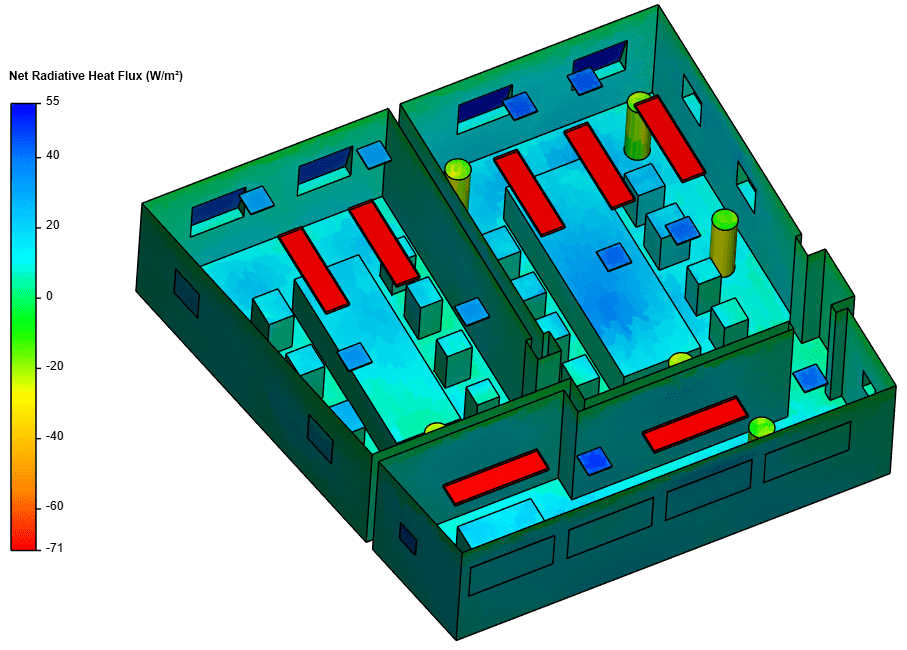
Everyone can relate to the feeling of radiative heat such as by being warmed by the sun or a fireplace. However, few realize that actually, every surface emits radiative heat.
SimScale now also includes the ability to analyze radiative heat transfer as part of the convective heat transfer analysis type.
With SimScale, radiation is modeled using a diffuse view factors model, suitable for modeling radiative heat transfer between arbitrarily complex surfaces through transparent media such as air or water. To couple the radiative wave and heat equation, a gray-body model is used based on the Stefan-Boltzmann Law.
Radiation can simply be enabled or disabled for the analysis and is controlled via radiative emission from heated surfaces through their emissivity or additional radiative heat fluxes (e.g., from solar radiation).
For more details about how to simulate the effects of radiation with SimScale, take a look at the recent Radiation Webinar, where we walk through the steps of how to apply radiation to your simulation and interpret the results. Additionally, find documentation here and a short introductory video on radiation results here.

